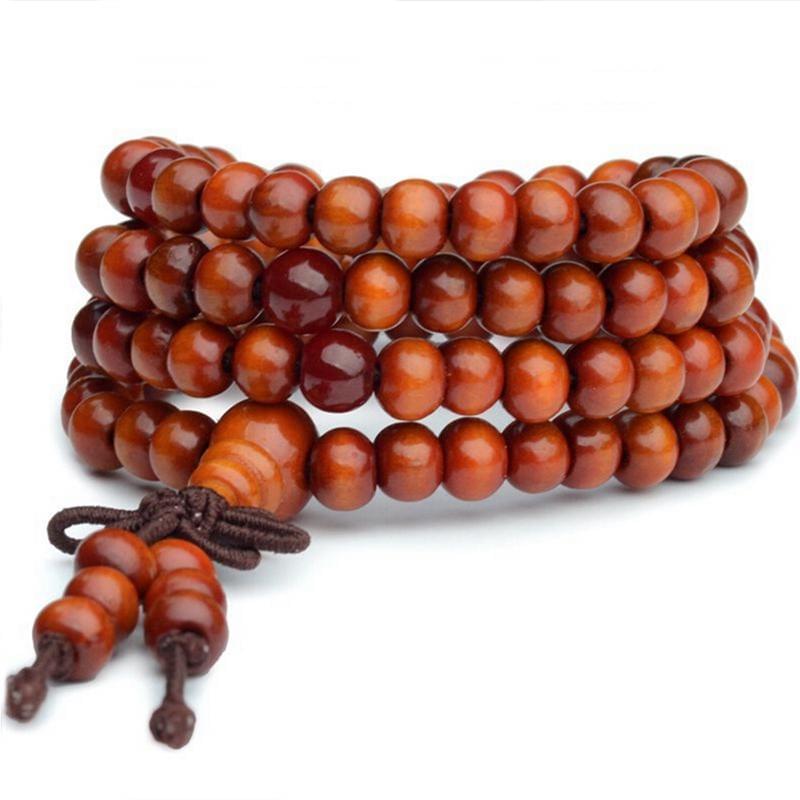I) What are Chakras?
The word chakra in Sanskrit means “wheel” and means the flow of energy in our body. The 7 chakras in our body are actually the center of energy and are known to regulate emotions. Their origins can be traced back to ancient Hinduism and Buddhism, both of which speak of the changing nature of the chakras.
Chakra balancing is the process of reaching a place of balance between the spirit, body, and health. It ensures that there is a harmonious flow of energy throughout the body.
From focusing on the overall well-being to feeling relaxed and grounded, each of the 7 chakras is of unique importance. They start from the very end of your spinal cord and go all the way to the pinnacle of your head.

According to meditation practices, if the chakras get out of sync, they can negatively affect your physical, mental, and spiritual health. Each of the chakras is associated with a particular part of the body and its proper functioning.
Each of these 7 chakras has a corresponding name, color, number, specific areas of the spine, from the sacrum to the crown of the head, and health focus.
II) History of Chakras
Chakras have recently become popular due to the growing popularity of yoga and the New Age philosophy in general. They are complex and ancient energy systems. The chakra system originated in the ancient Vedas of India around 1500 and 500 BC.
Chakra evidence is also found in Shri Jabala Darshana Upanishad, Cudamini Upanishad, Yoga-Shika Upanishad, and Shandilya Upanishad. In her book Wheels of Life, scholar Anodea Judith states that knowledge of the chakra system was introduced into the oral culture of Indo-Europeans, also known as Aryans. The chakra system has traditionally been an Eastern philosophy until modern writers such as Anodea Judith repeated and expanded their chakra texts to make knowledge more accessible.

III) The 7 Chakras
The 7 chakras are the main centers of energy in the body. You may have heard people talk about “unblocking” the chakras, which means that when all our chakras are open, energy flows freely through them and there is harmony between body, mind, and spirit.
The chakras are translated in Sanskrit as “wheels” and you can imagine them as free-flowing positive energy wheels.
Working with chakra energy shows how closely we are connected to everything around us. The energy body is the greatest means of developing self-knowledge – our bodies, minds, and spirits are in constant contact with each other, and they can reveal to us incredibly powerful information.
There are many chakras in the body that control the flow of pranic energy. There are major 7 chakras along the spine mentioned in the ancient scriptures.
The 7 Chakras and their meanings
1) Root Chakra (Muladhara Chakra)
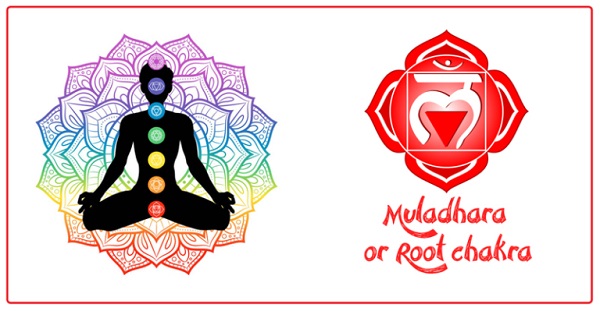
The Root Chakra also called the Muladhara Chakra represents our base. In the human body, it sits at the base of the spine and gives us a sense of justification. When the root chakra is open, we feel confident in our ability to face challenges and stand on our own two feet. When it is blocked, we feel threatened as if in an unstable place.
In other words, It gives you a foundation or base for life, and it helps you to feel the basics and endure the challenges. Your root chakra is responsible for your safety and stability.
Location: Base of spine, in tailbone area
Colour: Red
Element: Earth
Stone: Hematite
Yoga Pose: Warrior II, Standing Forward Fold, Garland Pose.
When it develops: 1-7 years old
Heal Your One the 7 Chakras – Root Chakra (Muladhara Chakra)
We Have Found The Most Beautiful Mala (Necklace)…Here’s Why You Need One. We Really Hope You Will Be Able To Grab One Of These Beautiful Necklaces Before They’re Gone!
Reserve One Of The Most Beautiful Mala(Necklace) Ever For Heal Your Root Chakra. Because you feel strong and fearless every day when you wear it.
Get your Root Chakra Mala(Necklace) from its official site.
Rare Chance To Experience The Benefits Of The Mala (with FREE shipping)!
2) Sacral Chakra (Svadhisthana Chakra)

The Sacral chakra also called the Svadhisthana chakra informs us of how our emotions relate to the emotions of others. It also governs creativity and sexual energy, When the sacral chakra is blocked, we feel out of control in our lives.
In other words, it is located below your belly button. The Sacral or Svadhisthana chakra is responsible for your sexual and creative energy. It is also concerned with how your feelings relate to the feelings of others.
Location: Under the abdomen About 4 fingers below the navel.
Colour: Orange
Element: Water
Stone: Tiger’s Eye
Yoga Poses: Goddess Pose, Reverse Warrior Pose, Seated Forward Bend
When it develops: 8-14 years old
Heal Your One the 7 Chakras – Sacral Chakra (Svadhisthana Chakra)
We Have Found The Most Beautiful Mala (Necklace)…Here’s Why You Need One. We Really Hope You Will Be Able To Grab One Of These Beautiful Necklaces Before They’re Gone!
Reserve One Of The Most Beautiful Mala(Necklace) Ever For Heal Your Sacral Chakra. Because you feel active, energetic, beautiful, sexy, and creative every day when you wear it.
Get your Sacral Chakra Mala(Necklace) from its official site.
Rare Chance To Experience The Benefits Of The Mala (with FREE shipping)!
3) Solar Plexus Chakra (Manipura Chakra)

The Solar Plexus chakra and also called the Manipura chakra is located between the navel and the bottom of the rib cage. It is characterized by emotions such as aggression, anger, and ego, as well as the ability to confidently control your life. Solar plexus imbalance can be physically described as digestive problems, liver problems, or diabetes. Emotionally, a person may struggle with low self-esteem, imperfection, depression, and anger. By balancing this chakra, we feel more confident, stronger, more focused, and more effective.
In other words, the Solar plexus chakra or Manipura is located in your stomach area. And responsible for your self-esteem and confidence, as well as it helps you to feel in control of your life.
Location: Upper abdomen in the stomach area
Colour: Yellow
Element: Fire
Stone: Amber
Yoga Poses: Cobra pose, Bow pose, Revolved triangle pose
When it develops: 15-21 years old
4) Heart Chakra (Anahata Chakra)
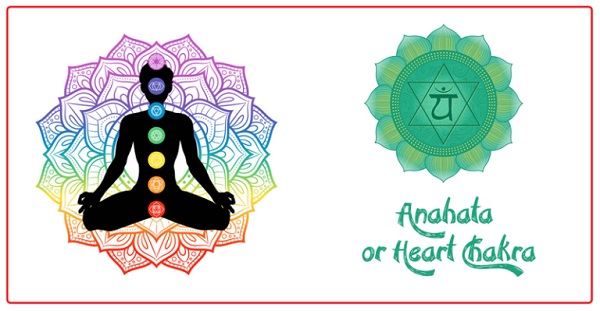
The Heart Chakra and also called the Anahata Chakra is located in the heart area. The heart chakra is like a bridge between the lower chakras and the upper chakras. The Heart chakra is a place of balance and feelings of love, affection, compassion, faith, and passion. An imbalance of the Heart chakra can face emotional issues such as anxiety, anger, jealousy, insecurity, fear, and mood swings. By combining this energy center, a person begins to feel care, friendship, compassion, optimism, and enthusiasm.
In other words, the Heart Chakra or Anahata is located in the center of your chest, near your heart. The heart chakra is not surprising because it’s all about our ability to love and compassion.
Location: Just above the heart, Centre of the chest
Colour: Green
Element: Air
Stone: Rose Quartz
Yoga Poses: Sphinx Pose, Dancers Pose, Low Lunge
When it develops: 21-28 years old
5) Throat Chakra (Vishuddha Chakra)
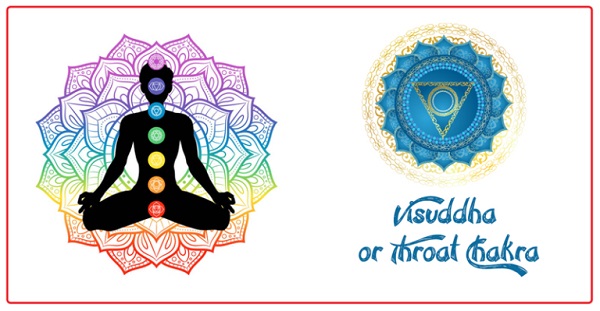
The throat chakra also called the Visuddha chakra is located at the base of the throat. It is associated with healthy expression, faith, inspiration, and the ability to communicate well. The throat chakra gives voice to the heart chakra and controls our ability to express our personal energy. When it runs at full capacity, it allows us to express ourselves truthfully and clearly. An imbalance of the throat chakra can be a feeling of weakness, calmness, or inability to express your thoughts. When this chakra is balanced, it allows for constructive communication, positive self-expression, creativity, and a sense of satisfaction.
In other words, the Throat chakra is related to our ability to communicate verbally.
Location: Throat
Colour: Light Blue/Turquoise
Element: Sound/Music
Stone: Aquamarine
Yoga Poses: Camel Pose, Supported Shoulder Stand, Fish Pose
When it develops: 29-35 years old
6) Third Eye Chakra (Ajna Chakra)
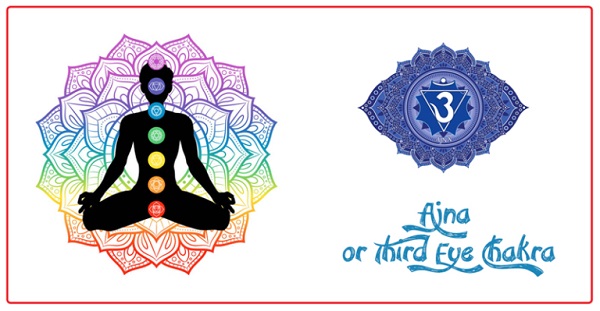
The third eye chakra also called the Ajna Chakra controls our ability to see the big picture and communicate with intuition.
Its qualities are intuition, foresight, intelligence, and self-knowledge. When imbalanced, it can make you feel afraid of success and non-assertive, or it can make you egotistical. Imbalances can appear as physical problems such as blurred vision, eye strain, and headaches. When this chakra is balanced and active, a person feels more vibrant and confident, both spiritually and emotionally. When there is no danger of death, a person becomes his master and is free from attachment to material things.
In other words, The third eye chakra, or Ajna Chakra, is located between your eyes you can say between your eyebrow. You can thank the Third eye chakra for a strong gut instinct, because the third eye is responsible for insight, and it is associated with imagination.
Location: Forehead between the eyebrows (also called the Brow Chakra)
Colour: Dark Blue/Purple
Element: Light
Stone: Amethyst
Yoga Poses: Plough Pose, Lotus Pose, Child’s Pose, Legs Up the Wall
When it develops: 36-42 years old
7) Crown Chakra (Sahastrara Chakra)
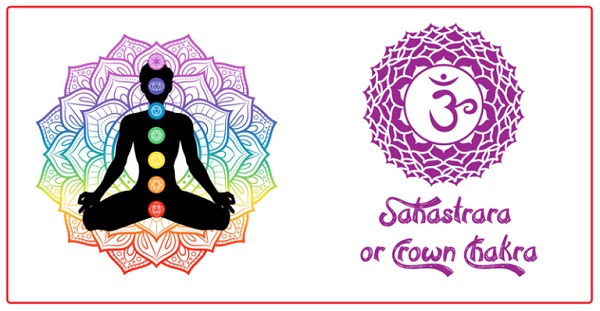
The crown chakra also called the Sahastrara Chakra is located on the top of the head and represents our ability to be fully spiritually connected.
The seventh chakra is the center of spirituality, dynamic thought, energy, and enlightenment. It brings a gift of cosmic consciousness and allows the inner flow of wisdom. When it becomes unbalanced, a person may suffer from constant feelings of frustration, melancholy and destructive feelings. The people who opened this chakra have a connection with the Universe and inner wisdom.
When you fully open your crown chakra, you will be able to gain access to the higher consciousness – although very few have been able to do so so far!
In other words, the Crown Chakra or also called Sahasrara is located at the top of your head and can be called a crown. It represents the cosmic and spiritual connection to yourself and It also plays a role in your purpose in life.
Location: The top of the head
Colour: Violet/White
Element: Divine Consciousness
Stone: Clear quartz
Yoga Poses: Headstand, Rabbit Stand, Half Camel Pose
When it develops: 43-49 years old.
IV) 7 chakras and our health
Can any imbalanced chakra out of all 7 chakras also affect our health?
In a healthy body, the flow of energy is harmonious and all the chakras are in balance. In blocked chakras energy does not flow harmoniously. This leads to chakra imbalance.
The physical manifestation of each chakra is through specific nerves/glands in the endocrine system and nervous system. Chakra imbalance is expressed through these systems resulting in mental and physical illness.
- Root Chakra: If it is blocked, we may experience anxiety as well as face physical ailments such as constipation and weight problems.
- Sacral Chakra: If it is blocked or does not rotate vigorously as it should be, so we face bladder, frigidity, impotence, kidney problems, and a hard lower back.
- Solar Plexus Chakra: If it is blocked, we can suffer from digestive disorders, hypoglycemia, diabetes, and ulcers and we may also have problems making life decisions.
- Heart Chakra: If it is blocked, we may suffer from lung disease, heart disease, high blood pressure, asthma, and of course, an inability to love.
- Throat Chakra: If it is blocked, we may feel stifled as well as have a stiff neck, sore throat, thyroid problems, hearing problems, and cold.
- Third Eye Chakra: If it is blocked, we may have blurred vision, eye strain, headaches, and nightmares.
- Crown Chakra: When we don’t feel connected or if it is blocked, we may experience alienation, depression, and boredom.
If you have experienced illnesses associated with blocking the 7 chakras, use the yoga poses listed below to help relieve stress and focus.
V) Balance your 7 chakras with Yoga poses
Do some yoga poses every day to help balance your chakras:
| Chakras | Yoga Poses For Chakra |
|---|---|
| Root Chakra (Muladhara Chakra) | Warrior II, Standing Forward Fold, Garland Pose, Head to Knee Forward Bend, Easy Pose |
| Sacral Chakra (Svadhisthana Chakra) | Goddess Pose, Reverse Warrior Pose, Wide-Legged Forward Bend C, Seated Forward Bend, Reclined Bound Angle Pose |
| Solar Plexus Chakra (Manipura Chakra) | Bow Pose, Prayer Pose, Revolved Triangle Pose, Cobra Pose, Breath of Fire |
| Heart Chakra (Anahata Chakra) | Sphinx Pose, Cobra Pose, Low Lunge, High Lunge, Dancers Pose |
| Throat Chakra (Vishuddha Chakra) | Baby Cobra Pose, Camel Pose, Supported Shoulder Stand, Plow Pose, Fish Pose |
| Third Eye Chakra (Ajna Chakra) | Plough Pose, Downward Dog, Lotus Pose, Child’s Pose, Legs Up the Wall |
| Crown Chakra (Sahastrara Chakra) | Lotus Pose, Headstand, Rabbit Stand, Half Camel Pose, Crocodile Pose |
Thank you, I hope this article helps you.
If you have anything on your mind as a suggestion, feel free to let me know in the comments section. I will be happy to help you.
Read also: “Benefits Of Stretching: How to be flexible and fit“



